With SUV sales predicted to hit 24.3 million by 2020 and the EV segment the fastest growing in the automotive industry, Jaguar has every confidence that an electric SUV should sell.

But first, it needs to convince the market that this is a vehicle worthy of worldwide appeal. Naturally, anyone au fait with electric vehicles will immediately point towards Tesla which has managed to gain global interest, if not always in the best light. Jaguar, on the other hand, is a company that has built its reputation and success on internal combustion. Of course, that is largely because petrol and diesel were the only power sources available for a long time.
Today, Jaguar is a very different and forward thinking animal that plans to electrify its fleet of vehicles by 2020, starting with the I-Pace.
Having first experienced the I-Pace in development mule form, it’s an understatement to state that we were excited to give the production version a go. And, after 11,000 hours of rig testing, more than 1.5 million miles of test drives and 200+ prototype vehicles made, I-Pace is finally ready for market.
Let’s get technical…
Perhaps the most talked about aspect of any electric car (though it shouldn’t be) is range. There’s a 90kWh battery that offers 298 miles (480km) autonomy - and that’s WLTP rated, meaning it should be a far more realistic figure than the often nonsense NEDC might suggest. The battery can be charged in 13.9 hours using a 7kW home charge point, or as little as 15-minutes can provide 62 miles of range using a 100kW rapid charger - twice the power of current generation 50kW chargers (not that you’ll find any in the UK, yet).
I-Pace uses the Combined Charging Standard (CCS) and so benefits from being able to use any of the thousands of compatible rapid chargers around Europe.
Bu hikaye AutoVolt Magazine dergisinin May-June 2018 sayısından alınmıştır.
Start your 7-day Magzter GOLD free trial to access thousands of curated premium stories, and 9,000+ magazines and newspapers.
Already a subscriber ? Giriş Yap
Bu hikaye AutoVolt Magazine dergisinin May-June 2018 sayısından alınmıştır.
Start your 7-day Magzter GOLD free trial to access thousands of curated premium stories, and 9,000+ magazines and newspapers.
Already a subscriber? Giriş Yap
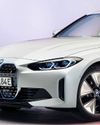
BMW Prices Up All-Electric i4 Saloon And iX SUV
DUE for UK launch in November 2021, BMW has released pricing details for the new all electric i4.

Volvo Trucks announces new family of heavy electric HGVs
VOLVO Trucks will boost its electric truck range in 2022, with the arrival of three more zero emission HGV models. Joining the FE and FL Electric trucks which are aimed at urban routes and use, the new FH, FM and FMX Electrics will cater for the heavier road transport sector.
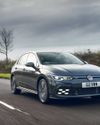
VOLKSWAGEN GOLF GTE
Can a hybrid hot hatch really deliver the best of both worlds? Alex Grant finds out.

REACH FOR THE SKIES
Electric flying racing cars have literally taken off, thanks to pioneering efforts from the Airspeeder team.
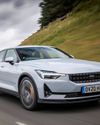
POLESTAR 2
With motorsport in its DNA, has Polestar cracked the electric driver’s car?
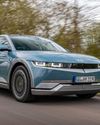
HYUNDAI IONIQ 5
The retro-inspired first instalment of Hyundai’s new-generation EV line-up has substance worthy of its head-turning styling.

Kia EV6
Hot on the heels of the Hyundai IONIQ 5, sister car the EV6 heralds a fresh new design direction for Kia, as well as the first of eleven electric cars (including seven dedicated) to launch globally by 2026.

BEAUTY... and the BEAST
With five rounds, nine teams and no fossil fuels; the first season of Extreme E is a no-holds barred proving ground for next-generation electric technology, and the result of some competing sustainability requirements.
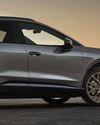
Audi prices Q4 e-tron
THE new Audi Q4 e-tron all electric SUV is now on sale on the UK, with prices starting at £40,750 OTR for the standard model and £42,250 OTR for the more swoopy, coupélike Sportback model.

2021 JAGUAR E-TYPE ELECTROGENIC
The Jaguar E-Type, dubbed “the most beautiful car ever made” by Enzo Ferrari needs little introduction to classic car fans the world over. Its design is so iconic that the E-Type is frequently credited as blurring the lines between definitions of art, sculpture and vehicular transportation.